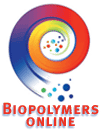Specialty
Textiles
ITS
98th Scientific Session: 'Specialty Textiles', Ottawa, 21 April 2005
98th Scientific Session “Specialty Textiles”
& 197th Board of Directors’ Meeting
The 98th Technical Session ‘Specialty Textiles’ of the
Institute of Textile Science was held on 21 April 2005 at Industry
Canada in Ottawa. This follows a highly successful October 2004 ITS
97th Scientific Session ‘Cutting Edge Technical Textiles’
held in Mississauga. Ms Sara Filbee and Nita Saville of Industry Canada
welcomed distinguished speakers and delegates.
Dr Shafiul Islam, CText FTI, of TexTek Solutions, chaired the 98th
Scientific Session. A record number of participants enjoyed insightful
presentations:
Dr Wen Zhong, University of Manitoba, presented - ‘Protective
Respirators for BioDefense’ – with focused R&D initiatives
to combine critical structural design.
Mr. Eric Barry’s, Eric Barry Consulting, Oakville, presentation
- ‘No Place to Hide!’ - revealed the textile industry’s
challenges in the edge of rapid globalization and trade liberalization.
Dr Elizabeth Crown and Rohit Sati, University of Alberta presented
‘Materials for Protection from Steam and Condensate’ with
promising research results.
Dr Jacek Mlynarek, CTT Group, Quebec, presented an overview of emerging
opportunities and development trend in the field of value-added textiles.
Helena Vandeweerd, Erhardt Schumann, Jerry Bauerle and Darko Medved
presented tokens of appreciation to the distinguished guest speakers.
Dawn Carrick presented the ITS Science Award to Dr. Elizabeth Crown
for her remarkable contribution to textile research and innovations,
and Peter Marsh presented the ITS Fellowship Award to Erhardt Schumann
for his dedication in the textile field. Dr Shafiul Islam presented
plaques to ITS Past Presidents: Dawn Carrick and Erhardt Schumann.
In the 197th Board of Directors’ Meeting in Ottawa on 21 April
2005, ITS Board of Directors elected the Executive Team for 2005-06:
President - Dr. Shafiul Islam, Secretary - Helena Vandeweerd, Vice
President - Darko Medved, Treasurer - Jerry Bauerle, Past President
- Dawn Carrick; and Directors: Dr. Jacek Mlynarek, Peter Marsh, Tom
Hong and Peter Aspley.
We plan to celebrate our 50th anniversary and100th Scientific Session
in 2006 as well as revamp our new website www.textilescience.ca. This
year, ITS BoD welcomed: Drs Lena Horne and Wen Zhong, University of
Manitoba, Dr. Guowen Song, University of Alberta, and Ms. Catherine
Andersson, QETE, DND, QC as new members.
The Institute of Textile Science will be holding its 99th Scientific
Session: ‘Coated and Laminated Textiles’
on October 19th, 2005 in Kingston followed by the 198th ITS Board
of Directors’ Meeting. We invite guest speakers. Hope to see
you all on October 19th in Kingston.

Front L>R: Dr. Shafiul Islam, CText FTI, TexTek Solutions;
Jerry Bauerle, BodyCote Ortech; Peter Marsh, PLM Consulting. Back
L>R: Darko Medved, Ivodex Enterprises Inc; Dr. Jacek Mlynarek,
CTT Group; Erhardt Schumann, DuPont Canada; Eric Barry, Eric Barry
Consulting; Dawn Carrick, DND; Dr Wen Zhong, University of Manitoba;.
Dr. Elizabeth Crown, University of Alberta; Helena Vandeweerd, Tulmar
Safety Systems Inc.

Peter Marsh presents the ITS Fellowship Award to Erhardt Schumann

Dawn Carrick presents the ITS Science Award to Dr. Elizabeth Crown

Dr. Elizabeth Crown with her ITS Science Award.
By: Dr. Shafiul A. Islam, CText FTI
President, Institute of Textile Science
Chair, ITS 98th Scientific Session: ‘Specialty Textiles’
Download
ITS 98th Scientific Session Program & Registration Form
Specialty
Textiles: http://textilescience.ca/sessions_98th.html
শফিউল ইসলাম
ইমেইল:
shafiul_i@yahoo.com :: ওয়েবঃ textek.weebly.com :: Canada :: www.linkedin.com/in/shafiul2009






Baldwin Co, Ltd.) under standard testing conditions. Each value is the average of 20 measurements.
The constant drawing rate of the sample is 10 min/min, the load at full scale is 500g, the sample
length is 10cm, the chart speed is 200 mm/min and the strain rate is 40 mm/min"
May I know the name of your standard?